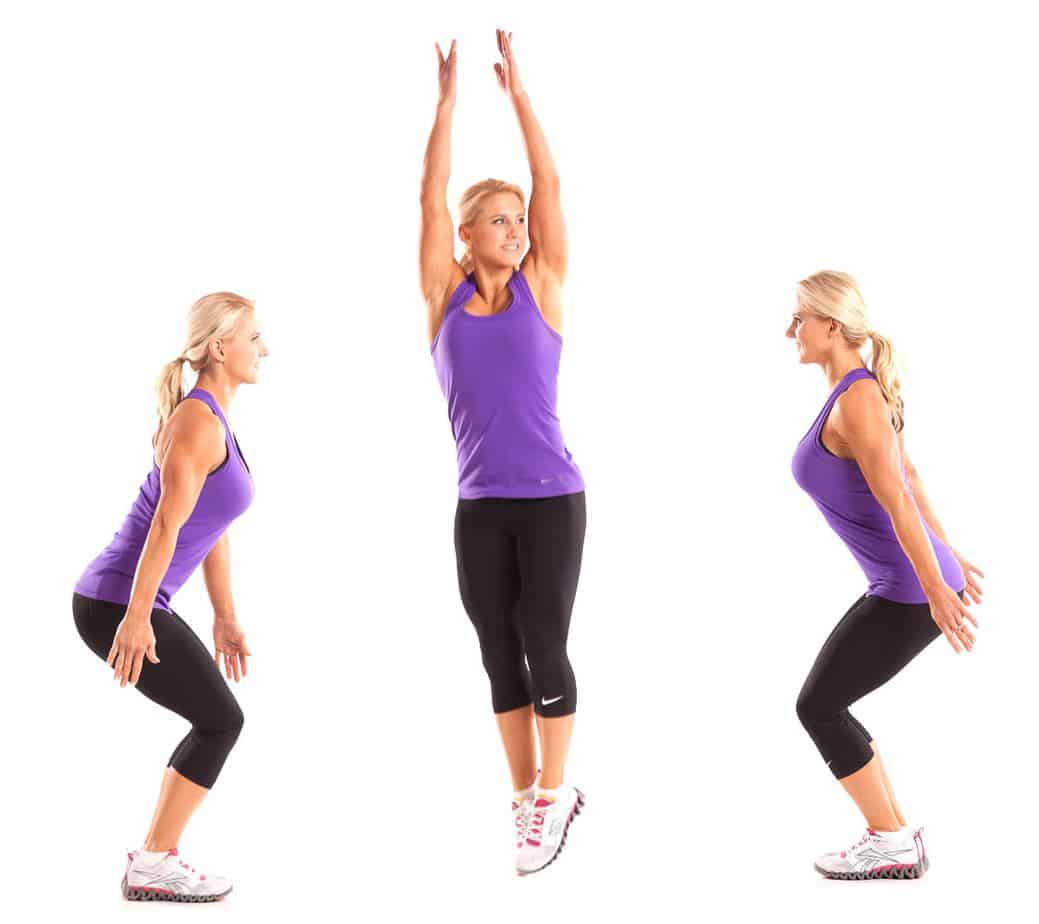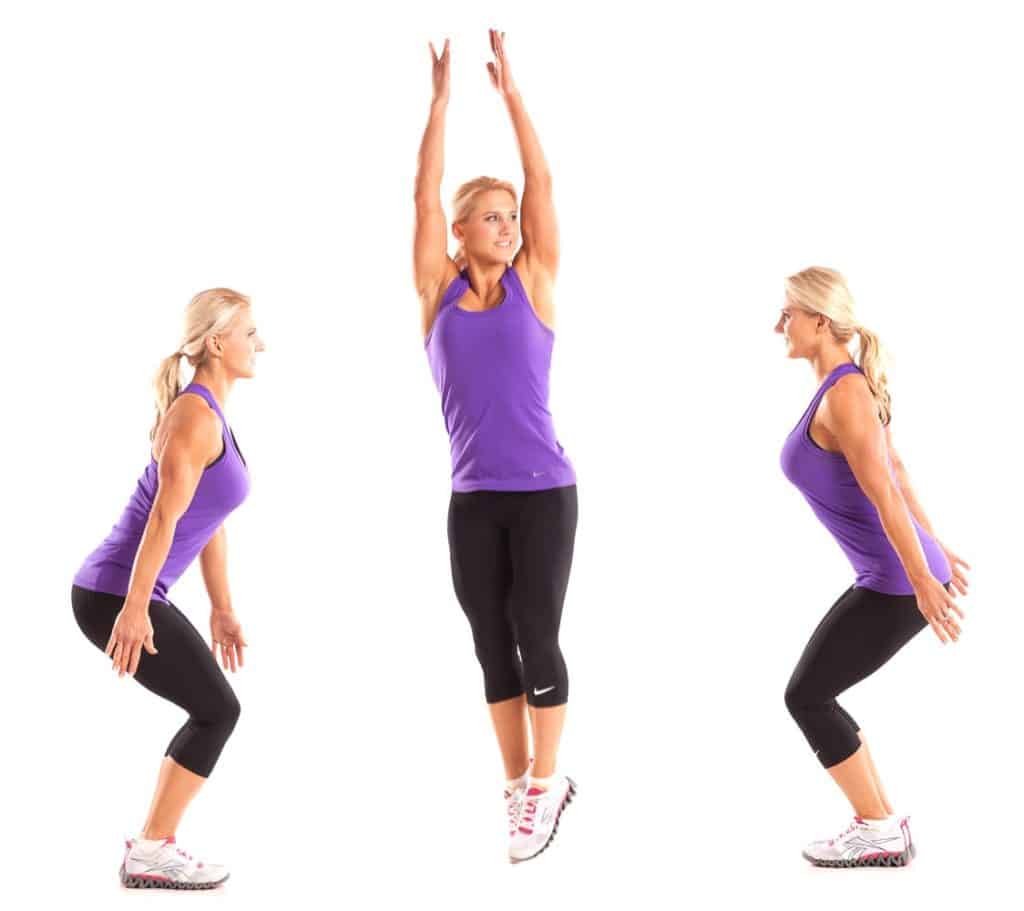To be able later to master more advanced gymnastics tricks, it is essential to learn basic gymnastics skills. While some blogs claim that the backwalkover is a beginner skill we think this is too ambitious. Gymnastics Canada’s evaluation process inspired this blog. It describes 11 movements that are designed for beginning gymnasts.
Competitive gymnasts have to compete in many venues, including at their local gym and at the Summer Olympic Games. Gymnasts need to perform many maneuvers in events like the vault, balance beam, and floor. Here is a list of some of these maneuvers, divided into their respective categories.
11 Beginner Gymnastics Tricks
These beginner gymnastics skills include movements that occur throughout a gymnast’s development and across different apparatus.
1. Balance On One Foot
You should first practice the movement on the ground before you move to an elevated balance beam or practice beam.

How to balance one’s foot on the other: Gymnasts should stand straight and lift one of their legs from the beam or floor. This position should be held for no more than 5 seconds. The gymnast can also bend or straighten his leg to make it more difficult. The arms can be held straight above or below the head to aid balance.
2. Straddle Sit
Straddle sitting is a way for gymnasts to familiarize themselves with a position that allows them to jump on the trampoline or beam. It can be used to transition between vaults, gym rings, and bars or for isolated skills. Because of its popularity, young gymnasts might find it useful to learn strong straddle sitting.
Straddle sitting: To straddle sit, the gymnast must be straight up on the ground with both feet in front. They can balance by placing their hands on the ground, and then stretching their legs until it feels comfortable. Point your toes and flex your legs.
When a gymnast does a straddle, they should keep their knees facing up. They shouldn’t roll inward. Either raise your chin, extend your arms straight up or keep your arms parallel to the ground.
3. Jump Half Turn
Gymnasts learn how to jump half-turn and trust their ability to land backward. This skill is essential at every stage of a gymnast’s growth.
How to perform a jump half-turn: Gymnasts must stand straight and keep their arms above their heads. They should bend at the knees and bring their arms to their sides. To generate power, lift the arms above the head and spring up once the legs are fully loaded. To initiate rotation, the athlete should rotate their shoulders as they spring up. To complete the half-turn, gymnasts should stop rotation and bring their chin to the center. Next, they will land on their knees and absorb the impact by bringing their arms straight up.
4. Consecutive Jumps
It is a great way for kids to learn how to absorb the impact of landing. The next step is to practice consecutive jumps. Gymnasts can practice jumping with their feet together, landing with their feet with two feet, and then jumping again. This springing movement is crucial for gymnasts to learn advanced movements such as round-offs, back handsprings, and other complex moves later in their development.
How do you perform consecutive jumps? Gymnasts stand straight on a trampoline or floor and bend their knees to lift themselves into the air. Once they are back on their feet, they should be able to spring up again. Gymnasts should be capable of landing 5-10 consecutive jumps without difficulty, landing correctly, and then quickly springing into the next jump.
5. Safe Landings Are Possible
A hop to a safe landing is a way to learn the mechanics and safety of landing safely. The gymnast must be able to land with their head straight up and their feet flat on the ground. This also requires that gymnast learns to bend their knees in order to absorb impact. Gymnasts should not jump off the platform higher than their level.
How to jump to a safe landing: Gymnasts must perform a two foot jump from a raised platform. They should land with a two foot landing. After absorbing the impact of landing, they should bend their knees and extend back to a standing place.
6. Tuck Jump
To tuck jump, gymnasts need to have enough power to achieve a tuck position in mid-air, then extend their legs to softly touch the ground.
How do you do an arc jump? To do a tuck jump, the gymnast must stand straight up with his arms extended above his head. They should bend at the knees and lift their arms up to generate power. Then, lift their arms up above their heads and then spring up.
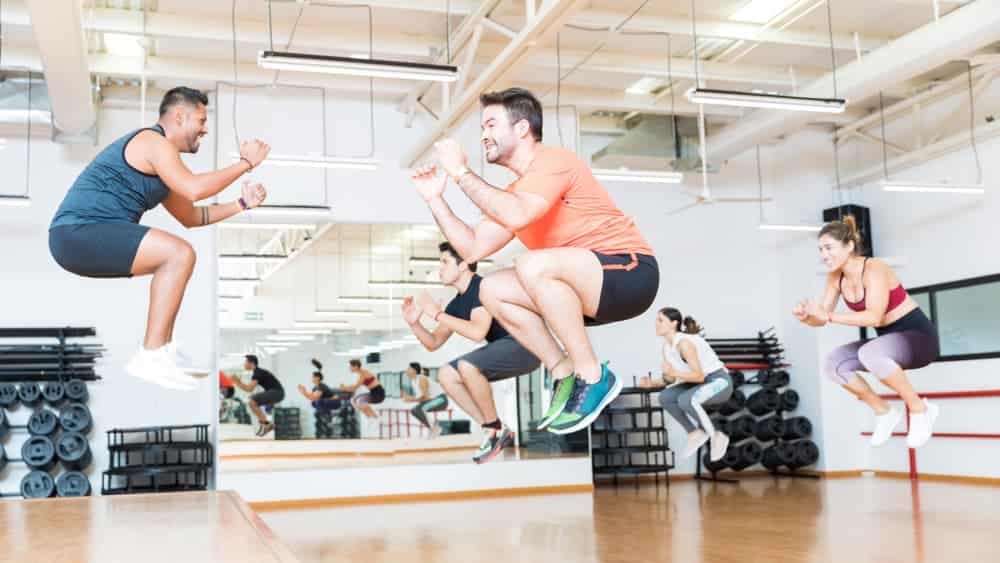
As they reach the top of their jump, gymnasts should lift their knees toward their chest. Next, they should bring their hands towards their chests and form a tuck position in mid-air. To absorb the impact of landing on concrete, they will need to lower their legs after completing the tuck. Then, they should extend their arms outward and let their arms drop over their heads.
7. Log Roll
Log rolling is an unusual movement that children won’t see in their everyday activities. Log rolls require gymnasts not to be able to see the ground and to roll over. They can confidently move towards a blind landing and gain confidence. This skill can be applied to movements like the front roll.
How do you make a log roll? The gymnast should lie on their back with their arms crossed and their feet pointed. To create a concave or hollow body shape, they should raise their arms and legs slightly from the mat. Next, roll onto your stomach. The gymnast should then move backward. Some gymnasts may find it easier to generate momentum using their hips.
8. Forward Roll
Gymnasts can practice a forward roll to get used to a move they can use if they fall off balance during handstand position or headstands. Inverted locomotion is also taught, which is a skill that will be used throughout advanced gymnastics.
How to do forward rolling: Gymnasts must stand straight up and crouch down, placing their hands on the floor shoulder-width apart. To begin rolling, they will need to tuck their heads and lift their hips. The gymnast should then roll to their shoulders and upper back before moving into the seated position. Gymnasts should keep their feet close to their seats so that they can continue to roll forward from their seats to their feet and then rise to a standing position, arms crossed over their heads.
9. Bridge
Although a bridge is a more advanced skill for beginner gymnasts, it’s essential for advanced movements. The bridge allows gymnasts to adjust their body position when they are inverted or under strain.
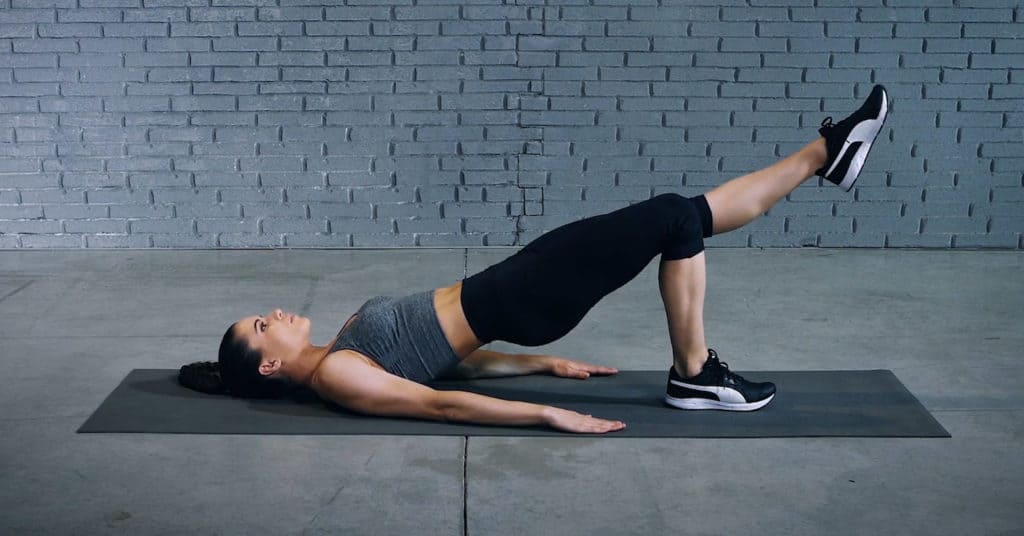
How do you build a bridge? When lying down, the gymnast should place his hands on the mat with his palms facing forward. Your elbows and knees should bend towards the ceiling. Once the gymnast is ready, they should raise their hips and push down on the mat using their hands. Before they can move into a bridge with straight legs, arms, and legs, they should be able first to reach an inverted “C” position.
10. Tripod
The first step to learning how to do a headstand is to achieve a balanced tripod. You can combine it with a front roll (ie, tripod to front roll out) to show gymnasts how safe to exit from inverted positions when they go off-balance.
How to make a tripod: A front roll is similar to a gymnast bending at the knees to place their hands on the mat. A triangle with three points between the gymnast’s hands and the mat is the key to creating a tripod. The triangle’s base and third points of contact are the hands and the head. The gymnast should lean forward with their hands on the ground and place their top head on the mat. This position should allow the gymnast to balance for at least three seconds.
11. Backward Roll
Gymnasts learn to be comfortable with backward movement by learning the back roll. It teaches gymnasts to feel comfortable starting a movement even if they cannot see the floor behind them. Backward locomotion can be learned with advanced gymnastics back walk-overs and back handsprings.
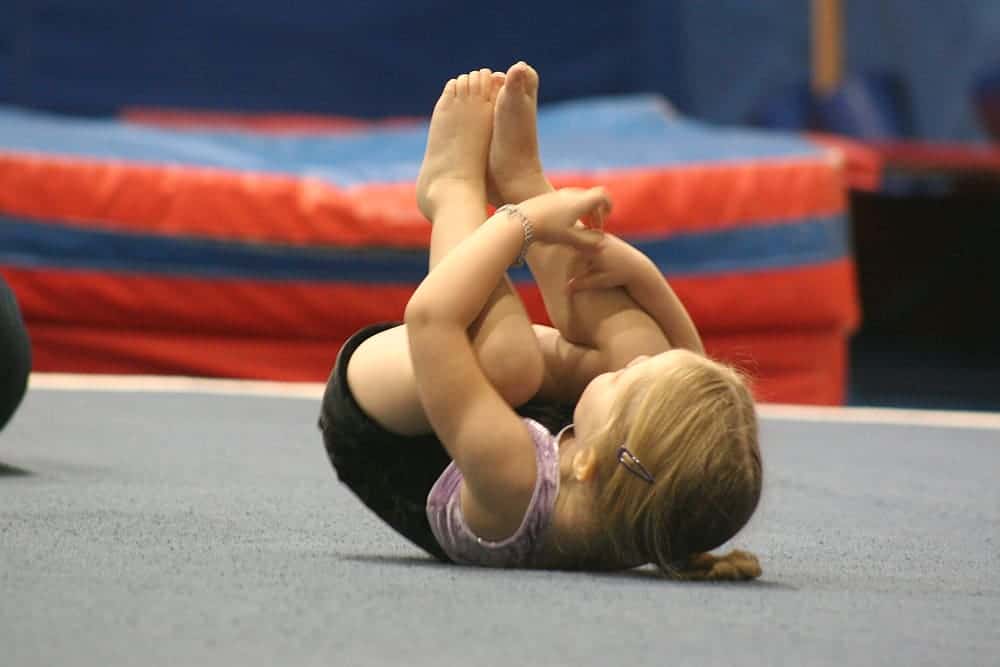
How to do a backward roll: Gymnasts should bend at their knees and fall to a crouched, with their feet close to their seats. Next, place their palms upon their chests and place their backs on their shoulders. They should then roll onto their backs until their hands and upper back touch the mat. The gymnast should press their hands into the mat and tuck their chins to the chest. Next, they should lift their feet and cross their hips. The gymnast should be catching the mat with their feet as they move through the course. After completing the movement, the gymnast should return to standing and then continue in the tuck position.
12. Front Handspring
The only difference is that the gymnast will move forward. A strong upper body is necessary to perform a front handspring or back handspring. Also, you should know how to do a handstand as well as a front walkover. The gymnast starts by running a few steps and then puts her dominant foot forward. Her hands should be straight up, close to the ears, and with eyes looking in front. It is placed on the ground with its leg straight and tight. The hands are then placed slightly away from the front foot and the leg behind it is kicked off the ground. To get to the standing position, push the front leg off the ground with great force.
14 Common Gymnastics Floor Moves
The floor exercise displays the most diverse moves in both men’s and women’s gymnastics. The floor routine includes the following:
- Backhandspring is a key tumbling move that involves a backward turn into a handstand and then a forward roll back to the original position.
- Front handspring: The same as a back handspring but the gymnast runs and then moves forward.
- Aerial Walkover: Also known as a frontal, this is similar to an aerial cartwheel in that the gymnast does a complete turn without touching the ground. An aerial walkover is a forward tumble and not sideways, unlike a cartwheel.
- Straight jump – A forward jump in which the gymnast maintains straight legs while flying and landing.
- Scissors leap – Also known as a switch leap, this forward leap is where the legs move in a scissor-like motion.
- Split leap – A running forward leap in which the gymnast moves through a split position while still airborne.
- Cross handstand – A variation on a handstand in which the hands are placed close to the ground.
- Front walkover – Similar to a forward handspring, but the legs of a front walkover gymnast move in a fluid, smooth motion.
- Backward somersault is the opposite of a somersault. You must have tucked knees, and then do a backward somersault along the floor.
- Roundoff is a cartwheel-style maneuver. It involves a half-rotation and a brief pause to hold a handstand, before returning to the original standing position.
- Back walkover: This is the reverse of a forward walkover, where the gymnast’s legs move fluidly one after another.
- Somersault – Also known as a front somersault (or forward somersault), this involves a forward flip on the floor, with your knees in a pike or tucked position.
- Cartwheel is a sideways rotation where a gymnast starts in a standing position and then rotates sideways while keeping her hands on the ground and rotating sideways with her legs in a split position. Then, she will stand up again.
- Aerial Cartwheel: Also known as a side aerial, or simply an aerial, this is a cartwheel that is performed in midair with no hands touching the ground.
Three Common Bar Mistakes
Uneven bars are perhaps the most distinctive component of women’s gymnastics. They emphasize the upper body strength, which is something that is not possible with the beam, floor, and vault. High-flying releases moves, including pirouetting and dismounts, are particularly important to judges. Judges will also be looking for handstand positions that are correct. Large deductions will be made for deviations. These are some of the most famous uneven bar moves:
- Hip circle – A circular move that moves around uneven bars while keeping your hips in contact with the bars. A gymnast can do either a front or back hip circle depending on their direction. A free hip circle is when the gymnast moves around the bar in a circle but not touching the bar.
- Kip is a bar move in which the gymnast moves from a gliding or hanging position to a support position. Although the legs remain in pike, their swinging momentum is crucial to propelling the gymnast’s entire body.
- Flyaway – A move that starts with a forward swing, is released from a bar, and then transitions into a backflip of the bar. Flyaway is used by gymnasts to switch bars or dismount completely. You can decorate flyaways with many twists and flips.
6 Common Gymnastics Vault Moves
The vault has fewer gymnastics maneuvers than the beam and floor. The vault is still a crucial component of determining a gymnast’s overall score in women’s artistic gymnastics. Here are some vault moves to watch:
- Amanar is a variation on a Yurchenko. An Amanar begins with roundoff onto a springboard. Next, a back handspring onto a vaulting platform is followed by two-and-a half twists into a layout salto off the table. Finally, a landing is made. An Amanar in men’s gymnastics is sometimes called a Shewfelt. Both Shewfelt and Amanar are the last names of notable gymnasts who have performed this maneuver.
- Front handspring – A vault handspring is similar to the one on the beam and floor. It involves a forward flip. Handsprings on the vault involve a running leap, then a flip to handstand on the vault, and then a push off to complete the flip. Finally, you land on your feet. Many handsprings include one-and-one half twists.
- Yurchenko – Named after Natalia Yurchenko, this move combines roundoff onto an elevated springboard, a back handspring onto the vault, and a backflip onto the vault onto the ground. Yurchenkos often feature multiple twists.
- Tsukahara – This move is named after the gymnast Mitsuo Tsukahara. It combines a half turn onto a vault with a backflip. This move is also known as a moon somersault or a salto. Tsukaharas often feature twists.
- Produnova – This maneuver was named after the gymnast Yelena Produnova and combines a front handspring onto a vaulting horse with two front somersaults.
- Chusovitina Gymnast Oksana Chusovitina is the inspiration behind two vaulting moves named after her. Both are derived from Tsukahara. The first involves a handspring forward onto a table followed by a piked salo forward with a full twist off. The second Chusovitina, sometimes called a Rudi after another gymnast, features a handspring forward onto a table followed by a straight salto forward and one-and-a half twists off.
Front Handspring
The only difference is the use of a springboard or vault. It’s similar to a floor handspring. The gymnast will run towards the vaulting table, jump from the springboard onto the table, and then perform a rotational movement on the ground and back to his standing position.
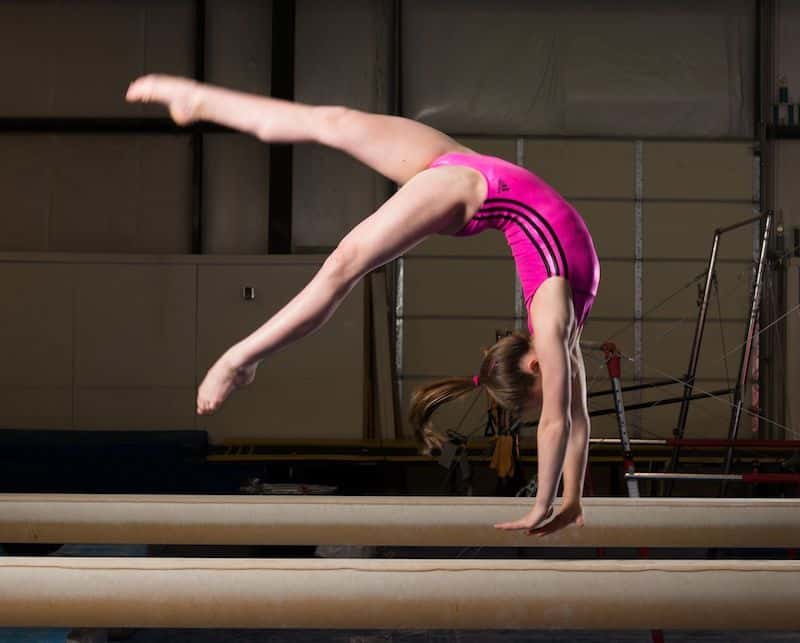
Yurchenko
This move is named after Natalia Yurchenko, a well-known gymnast. Yurchenko’s unique feature is the fact that it combines several moves in one event. This move starts with a round off onto the springboard followed by a back handspring on the vault and a backflip on the vault to the floor.
Tsukahara
The vault maneuver is named after Mitsuo Takahara, a Japanese gymnast. It’s sometimes called a Moon Somersault, or a Moon Salto. The gymnast does a half-turn on the vault before doing a backflip. A full-twisting double Salto tumble or dismount is commonly called tsukahara in many countries.
Four Common Balance Beam Skills
The balance beam component of women’s artistic gymnastics sees gymnasts performing routines on a solid beam that is four inches wide. They should perform with the same grace and execution as if they were on the ground.

The balance beam uses many of the same moves as the floor exercise. The beam is particularly focused on certain moves, such as:
- Walkovers in front and back
- Handsprings for front and back
- Split leaps
- Saltos are maneuvered where the body rotates around an imaginary axis. Beam saltos include aerial walkovers and aerial cartwheels. Double and triple saltos are difficult to perform and can lead to higher scores if executed properly.
Safety Is So Important In Learning Beginner Gymnastics Skills
Along with swimming and athletics, gymnastics is one of the three foundational sports.
This means that gymnastics movements can be used in other sports.
Learning how to safely perform basic gymnastics skills can prove very beneficial in the long-term. A certified coach can provide safe gymnastics training that will reduce injuries, improve movement and performance in all aspects of the sport.
Safe learning: What Does It Look Like?
Children must learn basic gymnastics skills and how to exit safely from them in order to learn safely. Let’s take, for example, the steps involved in learning how to do a handstand.
Although many gymnastics fans would assume that a handstand was a beginner move, coaches would disagree. Before a child can attempt a handstand, there are many skills and variations that must be acquired.
Gymnastics Canada has handstands included in their Bronze badge level. This is the fourth badge a child can earn as they move through the CanGym program. To earn Burgundy, Red, and Tan badges, a child must master dozens of movements before they can attempt a handstand.
Before learning how to safely do a handstand, gymnasts will need to be able to perform leg-supported headstands and tripods.
These movements will enable children to learn how to balance inverted using their core muscles and supporting muscles.
Gymnasts will also learn how to safely exit from these movements if they get off-balance. Even if you fail to exit a skill, that is part of the learning process. Safe, progressive learning allows gymnasts to experience what it is like to fall off balance while also learning more advanced skills that will prepare them for movements such as the handstand.
All of this learning is done under the supervision of certified coaches, which helps children to gain confidence and be able to attempt skills like the handstand.
F.A.Q.
What are easy gymnastics moves?
What are easy gymnastics moves?
6 Gymnastics Moves For Beginners
1. Forward Roll. Start position: The hands should be pointed toward the ceiling and your body should be upright. …
2. Cartwheel. The move begins in a high stance with one foot in front of another. …
3. You can also roll backward. This move begins with a tall stance. …
4. Handstand. …
5. Bridge. …
6. Back Bend/Back Bend Kick Over.
What is the easiest gymnastic trick?
These beginner gymnastics skills include movements that occur throughout a gymnast’s development and across different apparatus.
1) Straddle Sit. …
2) Balance on one leg …
3) Safe landing, hop to it. …
4) Log roll. …
5) Consecutive jumps. …
6) Forward roll. …
7) Jump half turn. …
8) Tuck Jump.
What is the most important trick in gymnastics?
Handstand: The handstand is the most fundamental skill in gymnastics. It is the foundation for all four events. You should be able to perform a flawless handstand.
What are the 8 basic skills in gymnastics?
Basic skills for a gymnast include flexibility and core strength, balance, and upper and lower-body strength. Power, mental focus, discipline, dedication. While commitment is not a requirement, it is a necessary skill that is often evaluated by coaches.

